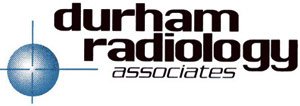Diagnostic Services
-
Computed Tomography (CT) Scan
A Computerized Tomography (CT) scan is a medical imaging test that uses X-ray technology and computer processing to create detailed images of the body's internal structures. During the scan, a patient lies on a table that moves through a ring-shaped machine, which takes multiple X-ray images from different angles. These images are then processed by a computer to produce a detailed 3D image of the scanned area, which can help doctors diagnose medical conditions.
-
Fluoroscopy
Fluoroscopic imaging is a medical test that uses a special type of X-ray technology to create real-time images of the body's internal structures. During the test, the patient lies on a table and a machine projects X-rays through the body onto a detector. The resulting images are displayed on a monitor, allowing doctors to see how the body is functioning in real-time.
-
Magnetic Resonance Imaging (MRI)
Magnetic resonance imaging (MRI) is a medical test that uses a magnetic field and radio waves to create detailed images of the body's internal structures. During the test, the patient lies on a table that slides into a large tube-shaped machine. The machine generates a strong magnetic field that causes certain atoms in the body to align in a particular way, which can then be detected by a receiver and used to create highly detailed images of the scanned area. MRI scans are generally safe and painless, but they can be noisy and require patients to remain very still during the imaging process.
Spealized MRIs
-
Mammography
Mammography is a medical test used to screen for breast cancer in women. The test uses low-dose X-rays to create images of the breast tissue. During the test, the breast is compressed between two plates to obtain high-quality images. Mammography is considered to be an effective screening tool for detecting breast cancer in its early stages, when it is most treatable.
Breast MRI and Ultrasound is also performed on site.
-
Nuclear Medicine
Nuclear medicine imaging is a medical imaging technique that uses small amounts of radioactive materials, called radiopharmaceuticals, to diagnose and treat diseases. The radiopharmaceuticals are injected, swallowed, or inhaled by the patient and then accumulate in specific organs or tissues of the body. A special camera called a gamma camera is used to detect the radioactive emissions from the radiopharmaceuticals and create images of the body's internal structures. Nuclear medicine imaging can be used to diagnose conditions such as cancer, heart disease, and thyroid disorders.
-
Ultrasound
Ultrasound imaging is a medical imaging technique that uses high-frequency sound waves to create images of the inside of the body. During an ultrasound, a handheld device called a transducer is placed on the skin, which emits sound waves that bounce off the internal organs and tissues. The sound waves are then detected by the transducer and converted into an image by a computer. Ultrasound imaging is commonly used to diagnose conditions such as gallstones, kidney stones, and heart disease. It is non-invasive and does not involve exposure to ionizing radiation.
-
Radiography
Radiography imaging is a medical imaging technique that uses X-rays to create images of the inside of the body. During an X-ray, a beam of electromagnetic radiation is passed through the body, and the X-rays that pass through are detected on a special film or digital sensor. Different tissues absorb X-rays to varying degrees, which creates a contrast in the resulting image. Radiography imaging is commonly used to diagnose conditions such as bone fractures, lung infections, and dental problems.
